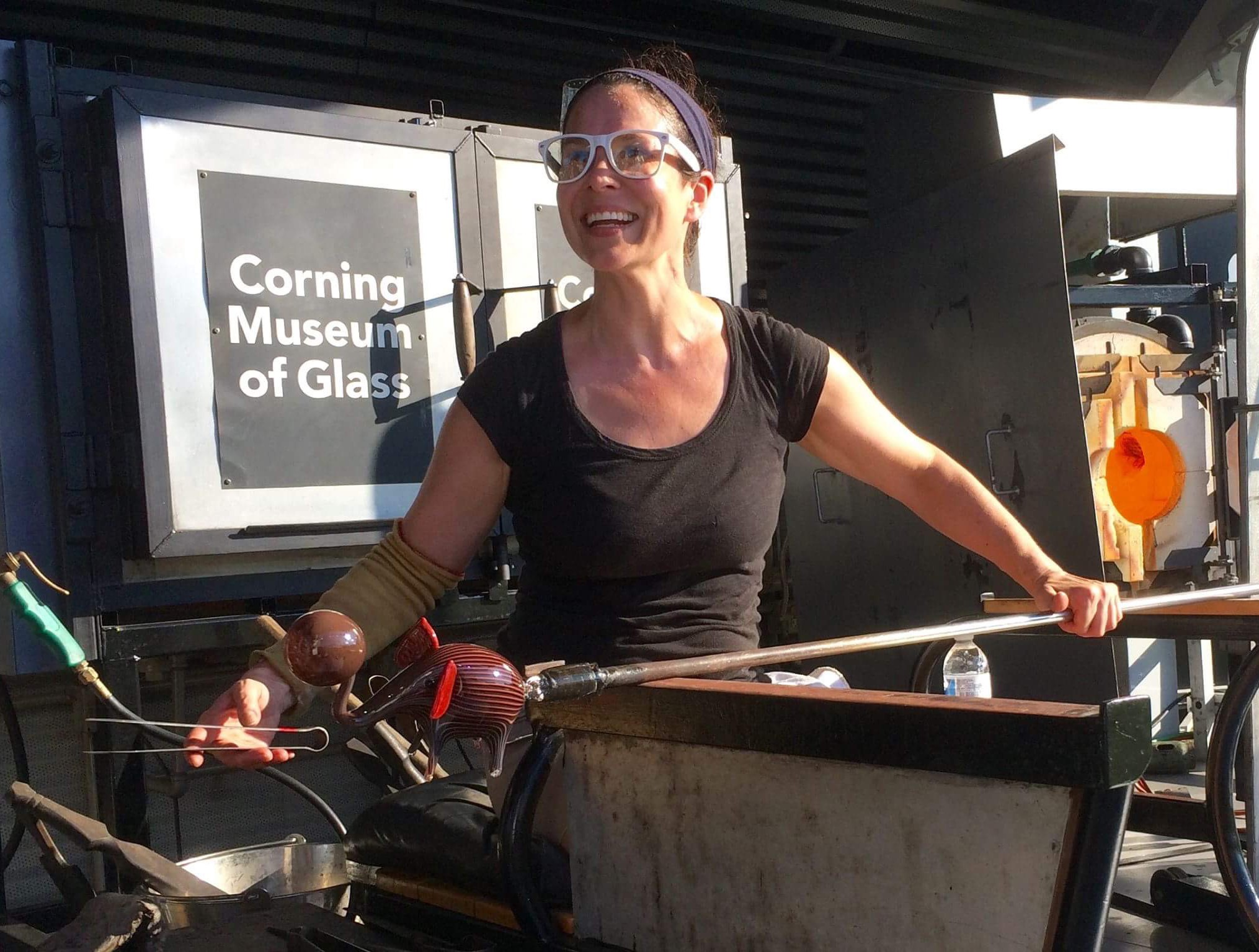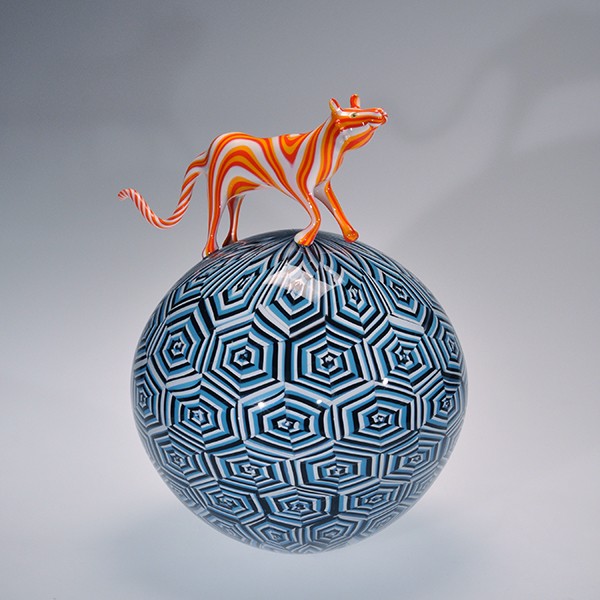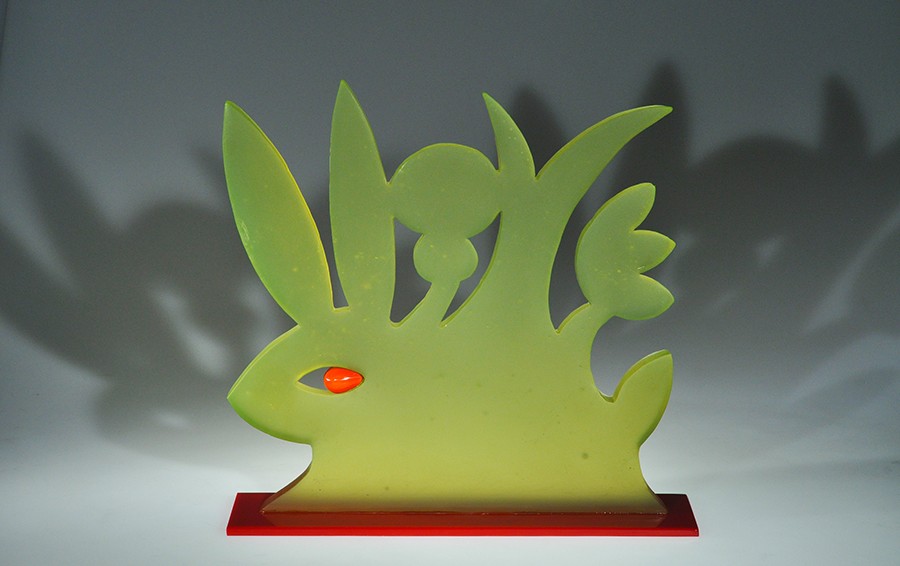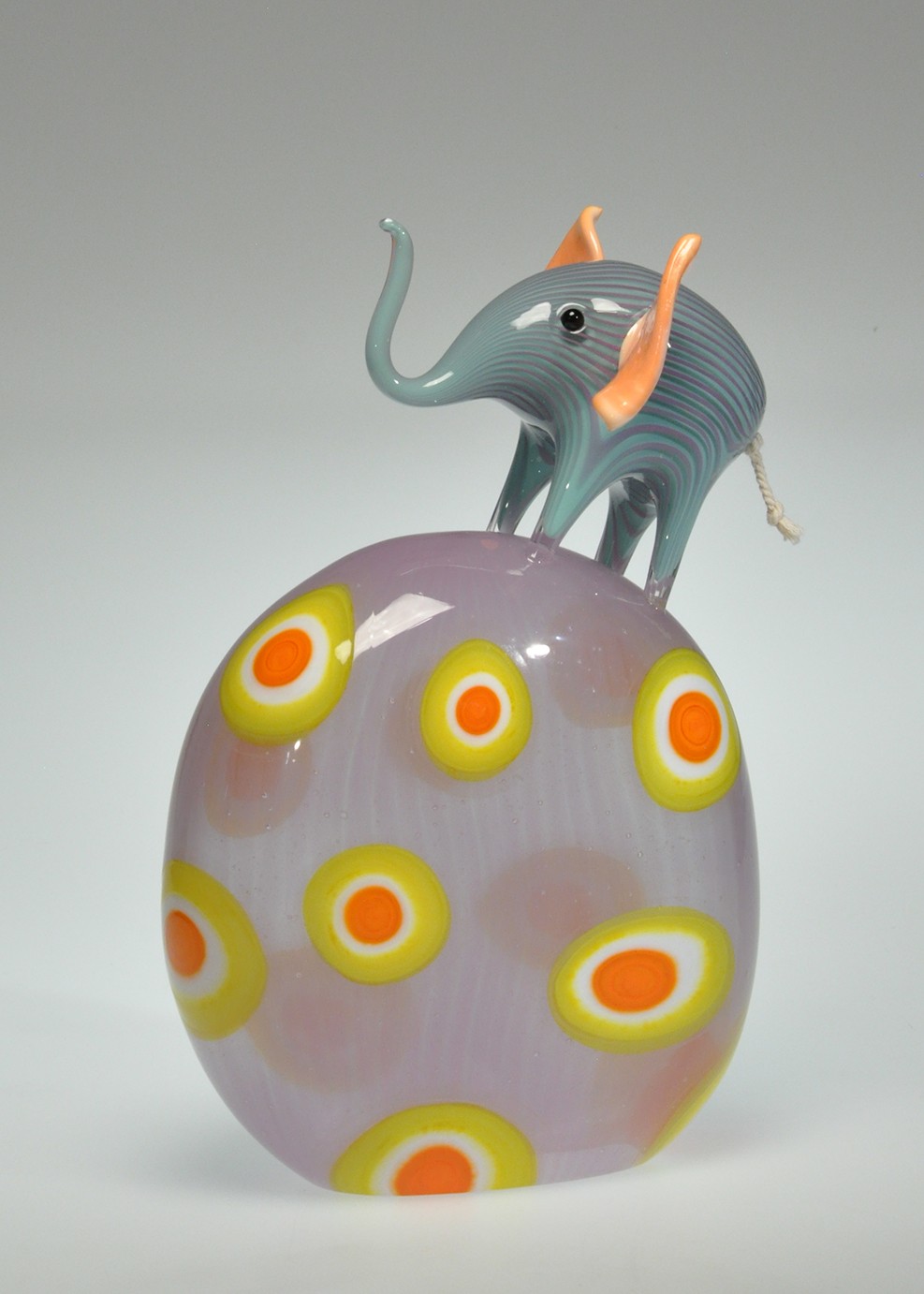Alright – so today we’ve got the honor of introducing you to Claire Kelly. We think you’ll enjoy our conversation, we’ve shared it below.
Alright, Claire thanks for taking the time to share your stories and insights with us today. Can you share a story with us from back when you were an intern or apprentice? Maybe it’s a story that illustrates an important lesson you learned or maybe it’s a just a story that makes you laugh (or cry)?
I was fortunate to stumble into jobs in the glass art world right out of art school. Usually this meant mundane tasks, low-skilled work, or off-hours projects. IE, the least desirable jobs. Once in a while a little opportunity would pop up and I would be first in line to grab it, however small or temporary. Eventually I was offered a job in a remote town in Vermont. I think my willingness to be in a rural state with little social scene sealed the deal for my employment. Once I was there working full time it was easy to fall into the rhythm of a working day at an artists studio. There was a clear methodology for what made up a working day along with the various tasks that go along with being an artist. I found this to be the most influential part of working at that studio. I got to progress quickly in the glass studio because I had responsibilities to meet. My skill set improved exponentially due to the amount of time I was granted in the studio. This and learning my bosses’ glassblowing techniques was one of the most formative times in my career. I will often tell young artists to go work for another artist if possible because it will give you a creative skeleton onto which you can begin your artistic practice.



Claire, before we move on to more of these sorts of questions, can you take some time to bring our readers up to speed on you and what you do?
I have worked in glass art in some capacity for my entire career. It’s been a long road with important detours on the way. I came up in my craft making mostly vessel based forms with a focus on color and pattern. The market at the time was largely participating in wholesale/retail shows that recurred every year. This was how my mentors had marketed their work and I used it as a template for my business that I shared with my partner. The template worked in the beginning but things were changing fast. World events and economic slumps were quickly altering our business model. Not to mention the internet becoming the force that it is. My business and partnership broke apart and I had to step back from my practice. I used this time to reevaluate what my priorities were to myself as an Artist. It was an uncomfortable time and I was full of self-doubt, but at the same time there was no reason not to try. I turned away from the vessel format and began making blown glass sculpture. I had to learn a whole new approach to glass making which meant learning new tools and techniques. This combined with my previous experience afforded me a unique voice in glass. I was using color, pattern, and mosaic techniques to bring my ideas to life. I began to revisit some of the art shows and galleries I had worked with in the past and the reception my work received was wholly positive. One small success built on the next and I have been developing this body of work since. Taking the time to adapt and change after an upheaval was scary but so important. I now make work that comes straight from my soul and that I have a deep relationship to. I have shared my technical and creative processes through workshops, demonstrations, and artist talks. Where my work stands out for its technical acuity it also has an aesthetic that is whimsical, fun, and approachable.



Learning and unlearning are both critical parts of growth – can you share a story of a time when you had to unlearn a lesson?
When I was first starting in my field there are (or were) perceived rules about how glass was to be made. The reason, seemingly, was to make the process more difficult and therefore only able to be done by the best makers. I’m confident this is a story heard through the Millenia from painters, architects, and for me in my little world of glass blowing. All I know is that it was a thing and the artists I knew and respected seemed to adhere to these rules. Sometimes they were couched in “saving you from yourself” and that you had to become adept enough make things in a traditional way. Traditional being before the invention of certain tools and technology. Sometimes saying that collectors won’t buy work if say, it is glued or painted. At some point I started to notice my peers using tools that before were considered “cheating” and achieving unbelievable results. From my perspective I had ideas that I wanted to make and could only see them being created with modern gluing methods. So I allowed myself to toss out the dusty rules and make the work I wanted to make. Unyoking myself from these notions has been liberating and sometimes surprisingly hard but in the end has made all the difference.


Do you think there is something that non-creatives might struggle to understand about your journey as a creative? Maybe you can shed some light?
The common view of the arts is of an unstable and hard to fund field. Business plans, accounting, loan applications are all stymied in the presence of an artist. We don’t seem to merit the credit given to entrepreneurs though that is what we are. We are persona non grata in a system that loves predictability. Artists are hard workers but the thing most people like to say to us is “Oh it must be nice to just do what you want all day.” And yes, that is why we chose this life. We chose to do something notoriously hard, which is doing what you love despite the unpredictability and lack of institutional support. What I want to say to people, particularly those that claim to be un-creative (which I always dislike hearing) is that the arts are unnecessary but crucial. Nothing has driven this home harder than recent events. The systems that define our economy and work culture came crashing down. The predictability that was so touted was unmoored. We were eventually able to see so many systems as unneeded and overbuilt. The world was driven inside and we spent our time absorbing the arts. Priorities and timelines shifted and we were able to devote time to “just what you want to do all day”. It is noteworthy that when we need it most art is there for us even when we didn’t think it was important or worth supporting.
Contact Info:
- Website: clairekellyglass.com
- Instagram: clairekellyglass
- Facebook: clairekellyglass
Image Credits
glass images: Claire Kelly Claire working ACK: Eric Meek


